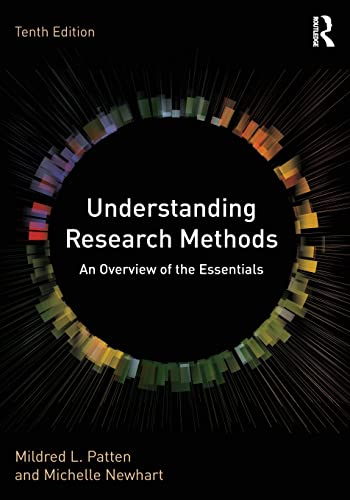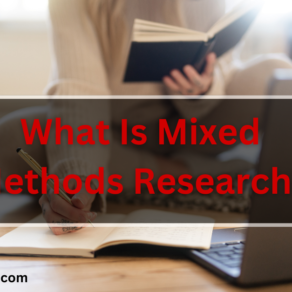Books on mixed methods research are the topic of our blog post today!
Mixed methods research is a research approach that involves the use of more than a single research method. It is therefore a triangulated methodology that capitalizes on the methodological strengths of different methods to find answers to a research questions within a single study. Mixed methods research, which also goes by several other labels (e.g., multitrait/multimethod research, integrated research, combined research), is popularly used to refer to the combination of quantitative and qualitative methods in a research study.
John Creswell has this illustrative definition of mixed methods research:
Mixed methods research is a research design with philosophical assumptions as well as methods of inquiry. As a methodology, it involves philosophical assumptions that guide the direction of the collection and analysis of data and the mixture of qualitative and quantitative approaches in many phases in the research process. As a method, it focuses on collecting, analyzing, and mixing both quantitative and qualitative data in a single study or series of studies. Its central premise is that the use of quantitative and qualitative approaches in combination provides a better understanding of research problems than either approach alone.
As I argued elsewhere, mixed methods research is far more intricate than merely applying both quantitative and qualitative methods within a single study. These research methods are guided by distinct philosophical frameworks. Quantitative research typically originates from a positivist perspective, which focuses on observable and measurable facts, while qualitative research is based on interpretivism, which emphasizes subjective interpretation and understanding.
Therefore, the incorporation of a mixed methodology in your study necessitates research questions that align with both these paradigms. It is not appropriate to use research questions that are solely suited for a quantitative paradigm in a qualitative method context, and vice versa. Your research design and methodology should always reflect the underlying philosophy of your research questions
Books on Mixed methods research
Whether you are new to mixed methods or are looking to deepen your understanding, here are some important books to help you navigate this unique and promising research approach. From seminal works by celebrated authors like Abbas M. Tashakkori, Charles B. Teddlie, Mildred L. Patten, to pioneering guides by John W. Creswell and Vicki L. Plano Clark, we will explore multiple facets of mixed methodologies.
Each book offers unique insights, extending from the basics of combining qualitative and quantitative techniques, to understanding the mixed methods research process and the various design models it encompasses.
Through their expert guidance, you’ll gain a more nuanced understanding of how to design, conduct, and analyze research using mixed methods, providing a strong foundation for your future research endeavors.
1. Research Design: Qualitative, Quantitative, and Mixed Methods Approaches, by John W. Creswell and J. David Creswell
This widely recognized book offers a comprehensive study of qualitative, quantitative, and mixed research methodologies. Its distinguishing feature is its juxtaposition of all three research designs, making it a valuable resource for both new and experienced researchers. The authors provide a meticulous guide that starts with a fundamental understanding of philosophical suppositions, essential aspects of the research process, literature review, theory application in research, and the significance of writing and ethics in academic inquiry.
The updated edition includes a detailed discussion on research proposal design and research study steps. It sheds light on the positioning of epistemological and ontological views in relation to the selected research question and methodology. It also delves into the transformative worldview and features expanded insights into case studies, participatory action research, visual methods, and action research in mixed methods.
2. Mixed Methodology: Combining Qualitative and Quantitative Approaches, by Abbas M. Tashakkori & Charles B. Teddlie
This book is a hands-on guide to understanding and effectively applying mixed methodologies. It delves into the clash of positivism and constructivism, details the distinctions between using mixed methods in research methodology versus utilizing mixed model studies throughout the research process, and presents a classification of various mixed methods and model studies.
3. Understanding Research Methods: An Overview of the Essentials, by Mildred L. Patten
This bestseller provides a thorough understanding of crucial concepts typically covered in research methods classes, covering both qualitative and quantitative research principles. With a layout that allows each concept to be studied independently, it offers lively examples to engage students, incorporates numerous case studies, and features online resources for comprehensive teaching support.
4. Designing and Conducting Mixed Methods Research, by John W. Creswell & Vicki L. Plano Clark
The third edition of this book offers a complete guide to mixed methods research, covering seven designs with examples from published studies. It also discusses the evolving nature of mixed methods research and presents new directions in the field.
5. A Concise Introduction to Mixed Methods Research, by John W. Creswell
An accessible introduction to mixed methods research for beginners, this book presents the fundamentals of designing and conducting a mixed-methods study in a concise format. It breaks down the research process into manageable steps and provides useful templates for planning and organizing studies.
6. Mixed Methods Research: A Guide to the Field, by Vicki L. Plano Clark & Nataliya V. Ivankova
This practical guide introduces a unique socio-ecological framework to understand mixed methods research from different perspectives. It provides answers to basic questions about mixed methods research, explores its intersection with other research approaches, and discusses its application in various contexts.
7. Research Design: Quantitative, Qualitative, Mixed Methods, Arts-Based, and Community-Based Participatory Research Approaches, by Patricia Leavy
This step-by-step guide to five major research design approaches provides a template for a research proposal for each approach and explains how to fill in each section. It also covers a range of hot topics in research design, offers advice on tailoring proposals to different audiences, and includes a general introduction to social research, an in-depth discussion of ethics, and a chapter on how to start a research study.
Final thoughts
Wrapping up, mixed methods research is no simple feat—it’s an intricate weaving of quantitative and qualitative methodologies, each with their own philosophical underpinnings. The rigor comes not just from applying multiple methodologies but understanding and articulating how these different strands come together to form a more comprehensive view of the research problem at hand. Anyone diving into this has to juggle different worldviews—positivist, constructivist, and sometimes even transformative—while crafting research questions that resonate across these paradigms.
Mixed methods research really shines when you’re dealing with questions that can’t be fully understood through just a qualitative or quantitative lens. For instance, if you’re studying educational technology adoption in schools, surveys can quantify the rate of adoption, but interviews could reveal the teachers’ feelings and attitudes toward the technology—both crucial for a full picture.
But this approach is not without its criticisms. Some argue that mixing methodologies can dilute the philosophical coherence of a study. However, as Creswell articulates, the method allows for a “better understanding of research problems than either approach alone,” rebuffing the idea that mixed methods might dilute the efficacy of research findings.
For those interested in diving deeper, the books I’ve mentioned are excellent resources. They don’t just provide a how-to guide; they dig into the why, the philosophical assumptions behind mixed methods research. And each book comes with its unique take, offering a rounded understanding of the subject.













